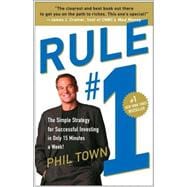
What is included with this book?
| Introduction: Make Money No Matter What | p. 1 |
| The Myths of Investing | p. 11 |
| Rule #1 and the Four Ms | p. 33 |
| Buy a Business, Not a Stock | p. 39 |
| Identify a Moat | p. 53 |
| The Big Five Numbers | p. 65 |
| Calculate the Big Five | p. 95 |
| Bet on the Jockey | p. 111 |
| Demand a Margin of Safety | p. 132 |
| Calculate the Sticker Price | p. 145 |
| Know the Right Time to Sell | p. 172 |
| Grab the Stick | p. 186 |
| The Three Tools | p. 196 |
| Take Baby Steps | p. 216 |
| Eliminate the Barriers | p. 246 |
| Prepare for Your First Rule #1 Purchase | p. 259 |
| Q&A | p. 274 |
| Using The Rule to Maximize Your 401k | p. 293 |
| Glossary | p. 315 |
| Acknowledgments | p. 323 |
| Index | p. 325 |
| Table of Contents provided by Ingram. All Rights Reserved. |
The New copy of this book will include any supplemental materials advertised. Please check the title of the book to determine if it should include any access cards, study guides, lab manuals, CDs, etc.
The Used, Rental and eBook copies of this book are not guaranteed to include any supplemental materials. Typically, only the book itself is included. This is true even if the title states it includes any access cards, study guides, lab manuals, CDs, etc.
Excerpted from Rule #1: The Simple Strategy for Successful Investing in Only 15 Minutes a Week! by Phil Town
All rights reserved by the original copyright owners. Excerpts are provided for display purposes only and may not be reproduced, reprinted or distributed without the written permission of the publisher.